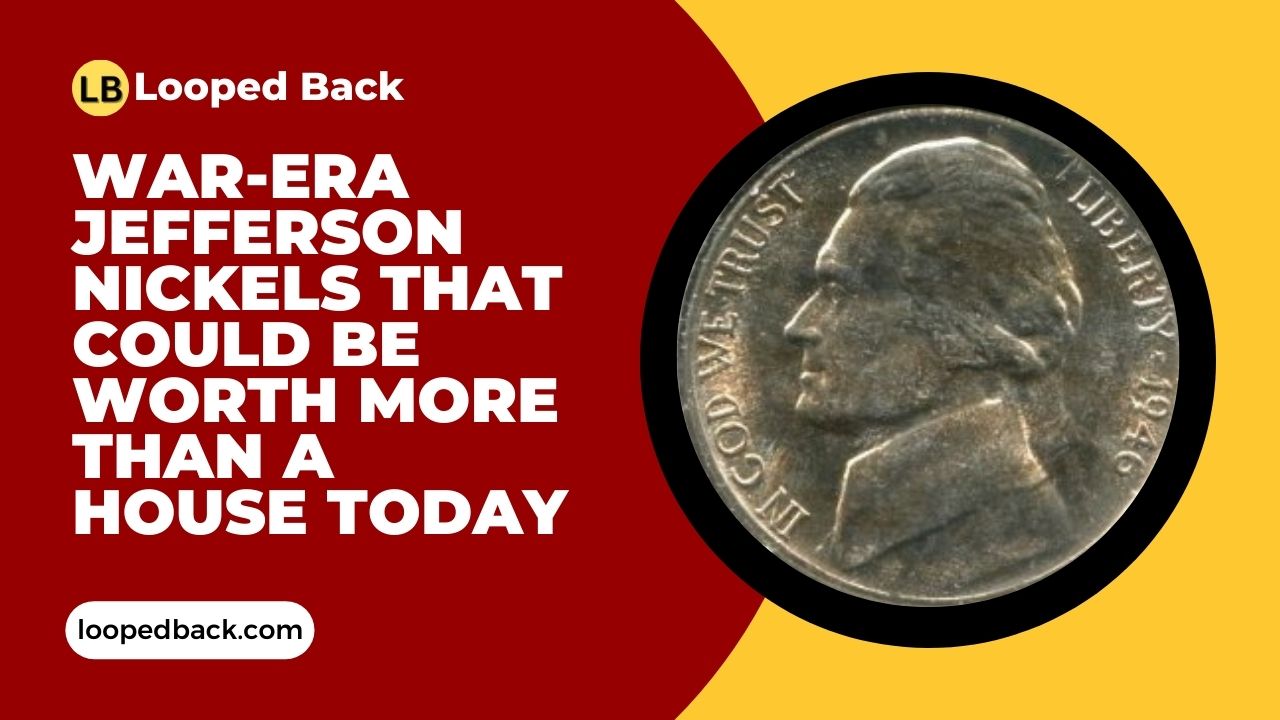The Jefferson nickel is a familiar coin for many, but did you know that some of these nickels could be worth more than you might expect? During World War II, the U.S. government made a temporary change to the nickel coin due to a shortage of important metals. The special Jefferson nickels made between 1942 and 1945 have become prized items for collectors, and some are worth more than an entire house today. This article explores the history behind these wartime coins, why they’re valuable, and how you can identify them in your own collection.
History Behind the War-Era Jefferson Nickels
During World War II, the United States needed nickel for military use, particularly for things like armor plating and weapons. Because there was a shortage of nickel, Congress decided to change the makeup of the Jefferson nickel. Starting in late 1942, a new version of the coin was made with a mixture of 35% silver, 56% copper, and 9% manganese. This change made these nickels stand out from the usual ones, and today, they are highly sought after by collectors.
In addition to the new metal content, these special coins can also be identified by a large mint mark above Monticello, the building on the back of the coin. This was the first time a mint mark was placed on U.S. coins by the Philadelphia Mint, which makes these coins even more interesting to collectors.
Why Are War-Era Jefferson Nickels Valuable?
The value of these special nickels can vary, but several important factors determine how much they might be worth:
Silver Content
One of the main reasons these nickels are valuable is that they contain 35% silver. Even if they weren’t rare, their silver content gives them a base value. When the price of silver goes up, the value of these coins can also increase. So, they have a built-in value even if they are not especially rare or in perfect condition.
Rare Varieties
Some war nickels are even rarer because they have errors or special features. For example, the 1943-P “Doubled Eye” variety is a famous error where Jefferson’s eye is doubled. This can make the coin worth several hundred dollars or more, depending on its condition.
High-Grade Coins
Like most coins, the better the condition of a war nickel, the more it is worth. Coins that are in perfect, uncirculated condition are worth significantly more than worn or damaged coins. Some coins that have been graded as MS-67 by professional graders can sell for thousands of dollars.
Full Steps Designation
Another factor that can make a war nickel more valuable is if the steps of Monticello on the reverse side are clearly visible and well-defined. If these steps are fully visible and sharply struck, collectors will pay a premium for the coin. This is called a “Full Steps” designation.
Most Valuable War Nickels to Look For
While all war-era Jefferson nickels have some value, there are a few that stand out for their rarity and desirability:
1942-P Proof Nickel
Some special proof versions of the 1942 nickel contain the wartime silver mix, and these coins can be worth over $1,000 if they are in top condition.
1943-P “Doubled Eye” Variety
The 1943-P “Doubled Eye” nickel is one of the most famous errors. Depending on its condition, it can be worth anywhere from $100 to more than $1,000.
1944-S and 1945-P Full Steps Nickels
War nickels from 1944 and 1945 with a fully visible and defined Monticello can sell for over $5,000, especially if they are in high-grade condition.
High-Grade 1945-P Nickel
The 1945-P nickel is another highly valuable coin, especially if it has full steps and is in mint condition. These coins can fetch thousands of dollars at auctions.
How to Identify and Sell War-Era Jefferson Nickels
If you think you have a war-era Jefferson nickel, here are a few tips to help you identify it:
Look for the Large Mint Mark
A mint mark of “P”, “D”, or “S” should be located above Monticello on the back of the coin. This mint mark indicates the coin was made during the wartime period.
Check the Year
Only nickels from the years 1942 (partial), 1943, 1944, and 1945 contain the silver mixture. So, make sure the coin has one of these years.
Use a Magnet
Since war nickels do not contain nickel, they are not magnetic. You can use a magnet to check if the coin sticks to it. If it does, it’s a regular nickel, not a wartime version.
Selling War Nickels
War nickels can be sold to coin dealers, at auctions, or through online platforms like eBay or Heritage Auctions. Their silver content makes them valuable even if they aren’t rare or in perfect condition, but rare, high-quality coins can fetch a lot more money.
The war-era Jefferson nickels are not just historical artifacts; they are valuable collector’s items. While many of these coins are still in circulation today, certain rare and high-grade examples are worth thousands of dollars. If you have any of these coins in your collection, it’s worth taking the time to check for rare varieties or signs of high grade, as they could be worth much more than you expect. Whether you’re an experienced coin collector or just someone who occasionally checks your change, these wartime nickels are worth keeping an eye out for.
FAQ’s
How can I tell if my nickel is a war-era Jefferson nickel?
Look for the large mint mark (P, D, or S) above Monticello on the back of the coin. Also, check the year – it should be 1942 (partial), 1943, 1944, or 1945.
What makes war-era Jefferson nickels valuable?
Their value comes from their silver content, rarity, and condition. High-grade coins and rare varieties can fetch hundreds or even thousands of dollars.
Where can I sell my war-era Jefferson nickels?
You can sell them to coin dealers, at auctions, or through online platforms like eBay or Heritage Auctions.

